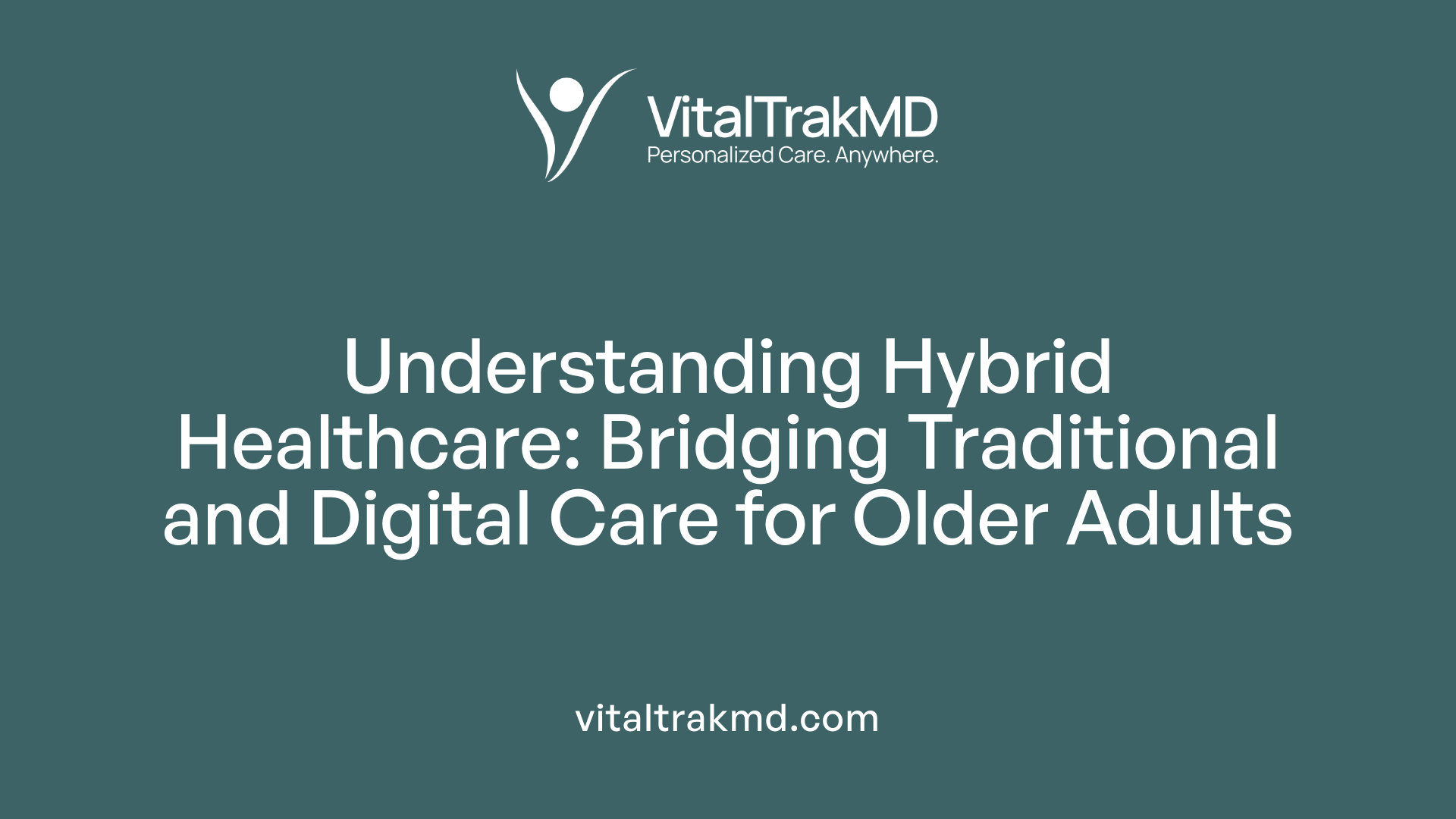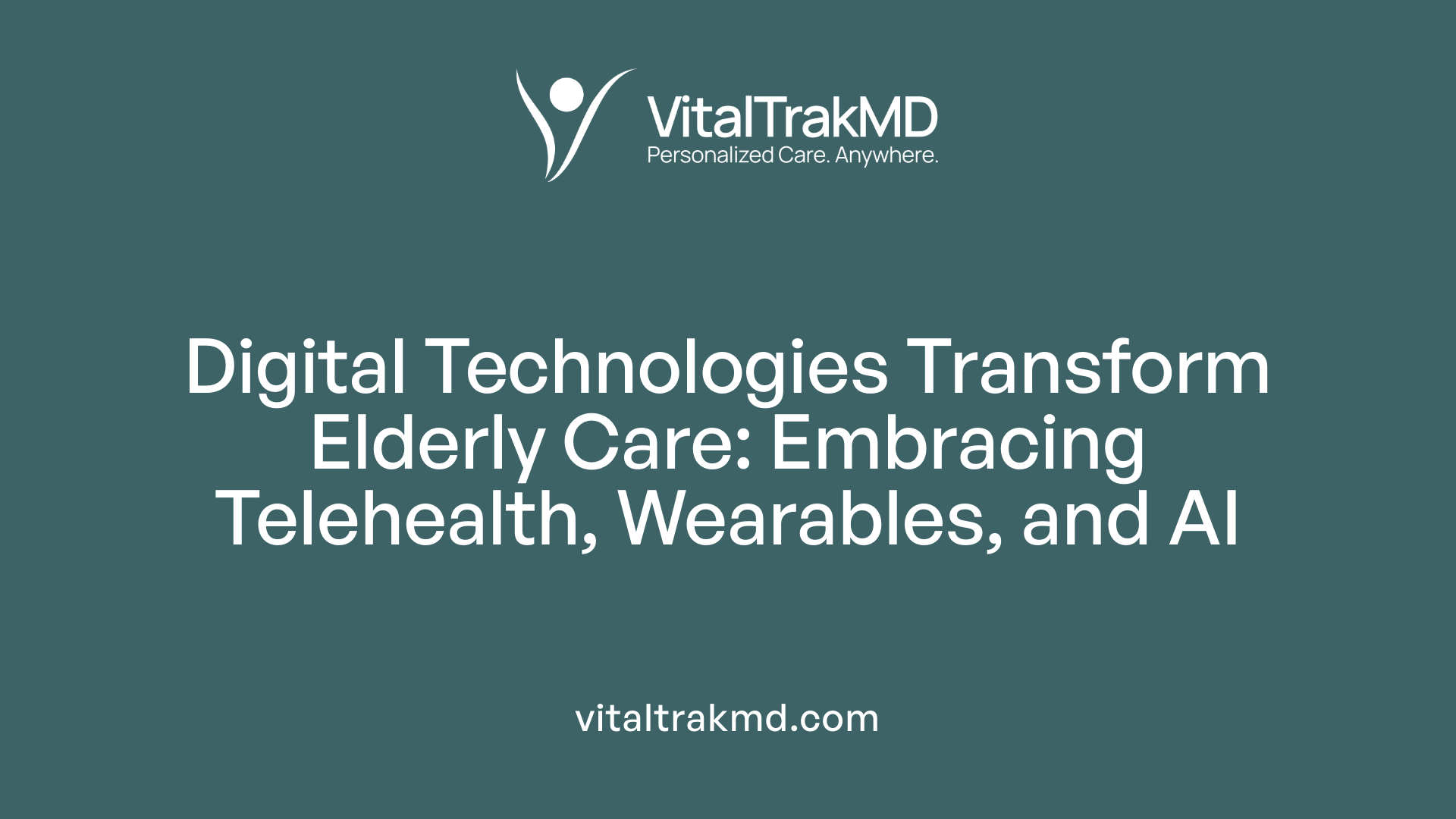Why Hybrid Healthcare Is the Future of Aging

The Rise of Hybrid Healthcare in Aging Populations
As populations across the globe age rapidly, healthcare systems face unprecedented demands to deliver more efficient, accessible, and personalized care. Hybrid healthcare, which seamlessly integrates in-person and digital services, emerges as a transformative approach to meet these challenges. Accelerated by the COVID-19 pandemic, this model leverages technological advances, policy shifts, and innovative care designs to support aging in place, improve health outcomes, and enhance system resilience. This article delves into the core aspects of hybrid healthcare for the elderly, exploring its applications, benefits, cutting-edge technologies, design innovations, future trends, and the systemic implications of widespread adoption.
Understanding Hybrid Healthcare Models and Their Application in Aging Populations

What are hybrid healthcare models and how are they applied to aging populations?
Hybrid healthcare combines traditional face-to-face medical care with virtual and digital health services, creating a flexible and comprehensive approach to patient care. This model uses technologies such as telehealth, remote monitoring devices, virtual consultations, and digital engagement tools to extend healthcare access beyond physical clinics.
In the context of aging populations, hybrid models are particularly valuable. Older adults often face barriers to in-person visits, such as mobility issues or living in rural areas with limited healthcare facilities. Hybrid care addresses these challenges by supporting aging in place—allowing seniors to stay in their homes while maintaining access to necessary healthcare services.
These models facilitate community-based services, remote management of chronic conditions, and caregiver support. For example, wearable health devices monitor vital signs like heart rate and oxygen levels, alerting providers early to potential issues. Virtual check-ins enable regular, proactive communication, helping prevent hospitalizations and streamline care.
Implementing hybrid systems also helps alleviate the strain caused by healthcare worker shortages. Telehealth supports flexible scheduling and allows experienced nurses or specialists, including retirees, to deliver care remotely. Such approaches enable early intervention, improve health outcomes, and enhance patient satisfaction.
Overall, hybrid healthcare models promote patient-centered care that adapts to demographic shifts and systemic healthcare challenges. These models not only improve the quality of life for older adults but also support healthcare systems in managing increasing demand efficiently.
Benefits and Advantages of Hybrid Healthcare for Seniors and the Elderly

What are the benefits of hybrid healthcare for seniors and aging populations?
Hybrid healthcare, combining virtual and in-person services, offers numerous advantages tailored to the needs of older adults. It significantly enhances access and equity by removing geographical barriers, especially benefiting those in rural or underserved areas. Digital tools like telehealth, remote monitoring, and wearables enable effective health management without requiring frequent visits to healthcare facilities.
Continuity and responsiveness of care are strengthened through remote check-ins and continuous monitoring, which help in early detection of health issues and enable prompt interventions. This is particularly valuable for managing chronic diseases such as heart conditions, diabetes, and cancer, and supports aging-in-place strategies.
During health crises like the COVID-19 pandemic, hybrid models proved crucial in maintaining care delivery while reducing infection risks. They also enable older adults with mobility or sensory impairments to receive personalized, responsive care tailored to their unique circumstances.
Furthermore, hybrid healthcare mitigates resource shortages by optimizing provider availability through virtual consultations and remote patient monitoring. It facilitates better coordination across care teams, reduces unnecessary hospital visits, and cuts costs for both patients and healthcare systems. Overall, this model fosters a more efficient, accessible, and patient-centered approach, ensuring that seniors receive the timely, high-quality care they need to maintain their independence and improve their health outcomes.
The Role of Digital Health Technologies in Shaping Elderly Hybrid Care

How is digital health technology shaping hybrid healthcare for the elderly?
Digital health innovations are revolutionizing how healthcare services are delivered to older adults, creating a more flexible, accessible, and personalized approach. Telehealth platforms enable virtual consultations, reducing the need for travel and making care more convenient for seniors who may have mobility or transportation issues.
Wearable devices like smartwatches and fitness trackers continuously monitor vital signs such as heart rate, blood pressure, and oxygen saturation. These tools, combined with remote monitoring sensors, can detect early signs of health deterioration, such as cardiovascular problems or fall risks, allowing for proactive measures.
Remote patient monitoring tools support aging in place, giving seniors and their caregivers peace of mind. They facilitate timely interventions through alerts triggered by abnormal health metrics, reducing hospitalizations and emergency visits.
Digital biomarkers—data collected from devices that reflect physiological states—are increasingly used with AI applications to predict health issues before symptoms become severe. For example, AI algorithms analyze gait and activity patterns to identify frailty or cognitive decline early.
AI-powered virtual assistants and chatbots also play a role by providing medication reminders, health education, and emotional support, enhancing patient engagement.
Support for aging in place extends further with smart home technology, such as fall detection systems, automated lighting, and environmental controls, helping seniors live independently longer.
However, widespread adoption faces challenges. Physical and cognitive limitations may hinder some seniors from using digital tools. Low digital literacy and lack of access to reliable internet remain barriers, especially among lower-income populations.
To realize the full potential of these technologies, efforts must focus on designing accessible devices, offering digital literacy training, and developing supportive policies that promote equitable access.
By integrating digital health technologies into hybrid care models, healthcare systems can improve early detection, enhance chronic disease management, and support seniors' independence, ultimately transforming geriatric care in the digital age.
Design Considerations and Innovations in Elderly-Focused Hybrid Models
What design considerations and innovations are involved in creating hybrid healthcare models for older adults?
Developing hybrid healthcare systems for elderly populations demands thoughtful, user-centric design principles. This means creating solutions that are accessible, simple to navigate, and tailored to the specific physical, cognitive, and social needs of older adults. Technologies such as wearables, remote monitoring devices, and virtual communication tools must be intuitive, reliable, and culturally sensitive to foster trust and ease of use.
A critical aspect involves overcoming barriers related to digital literacy and access, often referred to as the digital divide. Incorporating objective assessments of individual capabilities and providing community-based support can help ensure wider adoption. Engagement of older adults, their caregivers, and interdisciplinary healthcare teams in co-creation initiatives enables the customization of technology, making sure it fits real-world needs and preferences.
Innovations include integrating assistive technologies like fall detection sensors, smart home devices, and virtual reality for rehabilitation and social engagement. These tools support independence, safety, and well-being while reducing reliance on traditional in-person services.
To maximize effectiveness, hybrid models must seamlessly integrate into existing healthcare workflows. This involves aligning digital solutions with electronic health records and long-term care plans, promoting continuity of care and efficient service delivery.
Community engagement and collaborative research are vital for designing culturally appropriate, acceptable, and sustainable innovations. Such participatory approaches not only enhance technology acceptance but also ensure that systems are resilient and adaptable.
In conclusion, creating effective hybrid healthcare models for older adults requires balancing technological advancements with social, infrastructural, and cultural considerations. This approach helps improve health outcomes, enhances quality of life, and supports aging in place, addressing the complex needs of aging populations.
Improving Outcomes and Quality of Life Through Hybrid Healthcare
How does hybrid healthcare improve health outcomes, independence, and quality of life for aging populations?
Hybrid healthcare combines in-person visits with virtual care, creating a flexible and comprehensive approach that supports older adults in maintaining their health and independence. By leveraging telehealth, remote monitoring, and digital tools, this model ensures timely access to medical advice and ongoing management of chronic conditions.
For elderly individuals, particularly those in rural or underserved areas, hybrid care reduces the need for frequent travel, making healthcare more accessible. For example, remote monitoring devices can track vital signs such as blood pressure, heart rate, and oxygen levels, alerting caregivers or providers to potential issues early.
This approach also promotes self-care and daily living independence. Integrated systems and smart health technologies enable seniors to manage medications, monitor their health, and communicate with healthcare teams efficiently. These tools help delay or prevent complications from conditions like diabetes, cardiovascular diseases, or mobility issues.
During health crises like COVID-19, hybrid health models proved essential. They maintained healthcare access while minimizing exposure risks, especially for vulnerable geriatric populations. The capacity for remote consultations, combined with in-home health monitoring, strengthened resilience in healthcare delivery.
Overall, hybrid healthcare supports better health outcomes by providing continuous, personalized, and accessible care that enhances functional ability, safety, and quality of life for aging populations.
Future Trends and Systemic Implications of Hybrid Elder Care

What are the future trends and prospects for hybrid healthcare in aging care systems?
The outlook for hybrid healthcare in aging care is optimistic and evolving rapidly. With advancements in artificial intelligence (AI), remote monitoring, and wearable technologies, healthcare systems are increasingly capable of supporting aging individuals to live independently within their communities.
Many long-term care strategies will revolve around comprehensive virtual and in-person service integration. Telehealth, including simple options like phone calls and audio-only visits, will become more accessible for seniors in rural and underserved areas. This will help reduce hospital admissions, prevent complications, and promote proactive management of chronic diseases.
Personalized and community-centered care models will often prioritize early screening, health maintenance, and user-friendly digital tools. These approaches aim to empower patients to manage their health, supported by professional caregivers and family members. Funding and policy frameworks are likely to adapt, fostering innovative reimbursement models that reward value and outcomes rather than volume.
Remote monitoring devices and digital communication platforms will foster more responsive, coordinated care. For example, smart sensors and wearables can monitor vital signs and detect falls, alerting health providers immediately.
Overall, hybrid healthcare will become fundamental in addressing demographic shifts, ensuring aging populations receive accessible, effective, and dignified care suited to their preferences and needs.
Strengthening Healthcare System Resilience with Hybrid Approaches
How does hybrid care impact the long-term resilience of healthcare systems?
Hybrid healthcare models significantly contribute to the durability and adaptability of healthcare systems over the long term. By combining traditional in-person care with virtual and remote services, these models help ensure that health services remain accessible even during disruptions such as natural disasters, pandemics, or other crises.
One of the main advantages of hybrid care is its ability to provide resource flexibility. Healthcare providers can quickly shift focus between in-person and virtual services based on the situation, leading to more efficient resource allocation. This adaptability reduces the strain on physical facilities and allows healthcare systems to respond swiftly to fluctuating demands.
Moreover, hybrid care promotes decentralized and integrated response mechanisms. For example, remote patient monitoring and telehealth enable continuous care outside traditional healthcare facilities, supporting early intervention and ongoing management of chronic diseases. This approach strengthens both pre-hospital and in-hospital response phases, creating a more resilient health system.
The integration of technology and organizational innovation fosters an environment of learning and adaptation. As systems adopt AI, wearables, and other digital tools, they can gather real-time data, identify emerging health trends, and refine responses accordingly.
Ultimately, hybrid healthcare helps sustain essential health services despite external shocks. It enhances the system’s capacity to recover quickly from crises, maintains patient engagement, and ensures continuous access to care, all of which are crucial for building long-term resilience.
Supporting Evidence and Overcoming Challenges in Hybrid Elder Care
What evidence supports the effectiveness of hybrid healthcare as the future of aging care?
Numerous studies and real-world data back the potential of hybrid healthcare to revolutionize care for older adults. Research shows that combining virtual and in-person care enhances health outcomes by enabling continuous monitoring and early intervention.
During the COVID-19 pandemic, hybrid models proved critical in reducing infection risks while maintaining access to essential health services. Many older adults with chronic illnesses or mobility issues reported high satisfaction levels with telehealth options, appreciating the convenience and reduced need to travel.
In addition, data indicate that telemedicine provides a comparable quality of care to traditional in-person visits. This approach allows frequent follow-ups, which are vital for managing complex health conditions, and supports more personalized, patient-centered care.
Furthermore, hybrid care helps bridge gaps in health equity. Studies have shown similar utilization rates among diverse racial and ethnic groups, suggesting that when appropriately implemented, hybrid models can promote more equitable access.
The integration of these virtual solutions allows healthcare systems to be more adaptable, efficient, and patient-friendly, especially for aging populations. This solid evidence underscores the importance of adopting hybrid healthcare as a sustainable solution to meet the growing demand for elder care.
Addressing digital divides and literacy
While technology offers many benefits, disparities in digital literacy and access remain hurdles. Older adults often face challenges with unfamiliar digital tools or lack broadband internet, especially those in rural or low-income communities.
To combat this, healthcare providers and policymakers are investing in user-friendly platforms, training programs, and outreach initiatives. Simplified interfaces, language options, and support services can help seniors navigate telehealth platforms confidently.
Bridging the digital divide requires policies that expand broadband coverage, subsidize digital devices, and promote digital literacy programs tailored for older populations. These efforts ensure more equitable access and benefit everyone, regardless of socioeconomic status.
Policy and infrastructure needs
Robust policies are essential for the sustainable growth of hybrid healthcare. Reimbursement models must evolve to cover virtual visits and remote monitoring, encouraging providers to adopt and maintain these services.
On the infrastructure front, healthcare organizations need secure, interoperable technology that integrates seamlessly into existing systems like Electronic Health Records (EHR). Investments in high-quality remote monitoring devices, data security, and reliable internet connectivity are crucial.
Additionally, establishing standards for data privacy, security, and quality assurance can build public trust and ensure responsible use of digital tools. Developing supportive regulatory frameworks will promote innovation while safeguarding patient rights.
Overcoming cultural resistance and privacy concerns
Implementation faces cultural barriers, including resistance from healthcare providers accustomed to traditional models and patients hesitant about virtual interactions.
Addressing these requires education on the safety, effectiveness, and benefits of hybrid care. Demonstrating positive pilot results and patient testimonials can foster acceptance.
Privacy concerns also need attention. Clear policies on data security, consent, and confidentiality, along with transparent communication, can reassure patients and providers about the safe use of digital health data.
In sum, widespread acceptance and successful integration of hybrid elder care hinge on evidence-driven practices, policy support, infrastructural investments, and efforts to build trust among all stakeholders.
Implementing Hybrid Healthcare: Challenges and the Path Forward
Despite the promising benefits of hybrid healthcare, addressing barriers such as technological access, digital literacy, and privacy concerns remains crucial. Policymakers, healthcare providers, and communities must collaborate to create supportive infrastructure, inclusive policies, and educational initiatives that foster widespread adoption. Continued innovation, integration of emerging technologies like AI, VR, and IoT, and a focus on equitable access will ensure hybrid healthcare effectively supports aging populations worldwide. As the global demographic shifts towards an older population, hybrid healthcare stands out as a vital, adaptable, and resilient approach to delivering future-ready geriatric care.
References
- Healthcare's Future Is a Hybrid Model - Caregility
- The Future of Health Care Is Hybrid
- [PDF] Going Beyond Digital: Why Hybrid Care is the Future of Health Care
- 5 Reasons Hybrid Care is the Future of Healthcare - MakoRx
- How Can Telehealth Help Address an Aging Population?
- What is Hybrid Patient Care Model in Healthcare: Full Guide
- Generational differences in healthcare: the role of technology in the ...
- The case for hybrid care models | Healthcare Dive
- Designing for dignity: Why aging in place of choice must guide the ...
- The future of health systems - OECD
Recent articles
Want to Feel Better and Live Healthier?
Join hundreds of patients taking control of their health with personalized care that fits their life – not the other way around.
Rated 4.8/5 by 32+ customers







